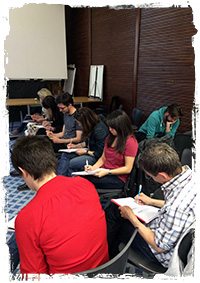It has been clear for many years that female instrumentalists are highly underrepresented within the jazz scene in the UK and are not pursuing advanced jazz studies to the same degree as their male counterparts (Black, 2017). Plausible explanations include; a girl’s typical choice of first-study instrument being unassociated with traditional jazz and the competitive and perhaps aggressive, environment present in jazz ensembles and pedagogy (McKeage, 2004) substantiated by the historical narrative of jazz as a masculine art form (Dahl, 1984). Over the past few years, there have many a growing number of successful and internationally-recognised professional UK female jazz instrumentalists, such as Trish Clowes, Yazz Ahmed and Nubya Garcia. They are clear examples of musicians with tremendous improvisational ability and who can perform on a level with their male peers. In spite of this, there remains a relatively low number of female jazz instrumentalists performing in the UK in comparison with the number of men (Raine, 2020). The act of improvisation carries elements of risk (Azzara and Snell, 2016), such as pushing oneself forward, often in group settings, and exposing oneself to the judgement and criticism of both peers and teachers. The personal attributes required to undertake improvisation run counter to historically engrained attitudes that urge girls to conform to established gender roles and norms and avoid eliciting attention from others (Wehr-Flowers, 2016, 2006; McKeage, 2004). This, coupled with the sense that females are potentially stepping into a space traditionally occupied by males, creates a barrier to women’s engagement with the performance of jazz music. Despite being the entry point for many musicians pursuing a career in jazz, there continues to be a woefully low number of young women applying to study jazz at at university or conservatory. I propose to examine whether there are barriers to young women’s participation inherent within the framework of UK jazz education. The investigation will be three-fold. Firstly, gathering enrolment data on who is participating in UK jazz education, aggregated by gender and instrument, to determine the extent of the gender disparity. Secondly, it will gather testimonies of young women’s lived experiences exploring jazz improvisation in an educational setting and how these experiences affect their pursuit of further studies and subsequent career choices. Thirdly, it will attempt to establish the ways young people access jazz education and the ways in which they leave it.
Links


